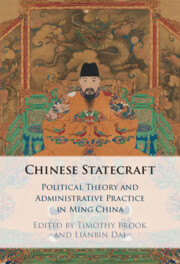Refine search
Actions for selected content:
848 results
11 - Liability and Responsibility
-
- Book:
- International Environmental Law
- Published online:
- 19 September 2025
- Print publication:
- 09 October 2025, pp 381-414
-
- Chapter
- Export citation
19 - Recent Landmark Decisions
- from Part IV - Liability and Evidence
-
-
- Book:
- The Cambridge Handbook on Climate Litigation
- Published online:
- 03 June 2025
- Print publication:
- 31 July 2025, pp 472-497
-
- Chapter
-
- You have access
- Open access
- HTML
- Export citation
Chapter 11 - International environmental law
-
- Book:
- International Law
- Published online:
- 26 July 2025
- Print publication:
- 31 July 2025, pp 606-662
-
- Chapter
- Export citation
Chapter 8 - State responsibility
-
- Book:
- International Law
- Published online:
- 26 July 2025
- Print publication:
- 31 July 2025, pp 413-476
-
- Chapter
- Export citation
15 - State Responsibility
- from Part IV - Liability and Evidence
-
-
- Book:
- The Cambridge Handbook on Climate Litigation
- Published online:
- 03 June 2025
- Print publication:
- 31 July 2025, pp 371-390
-
- Chapter
-
- You have access
- Open access
- HTML
- Export citation

Chinese Statecraft
- Political Theory and Administrative Practice in Ming China
-
- Published online:
- 17 July 2025
- Print publication:
- 31 July 2025
12 - The Law of State Responsibility: A Period of Great Advances
-
-
- Book:
- The Cambridge History of International Law
- Published online:
- 01 May 2025
- Print publication:
- 29 May 2025, pp 362-389
-
- Chapter
- Export citation
28 - The Right to Integrity
- from Title 8 - Rights and Freedoms
-
- Book:
- International Human Rights Law
- Published online:
- 10 April 2025
- Print publication:
- 01 May 2025, pp 644-700
-
- Chapter
- Export citation
15 - State Responsibility and Remedies and Reparations for the Survivors of Torture and Ill-Treatment
-
- Book:
- The Prohibition of Torture and Ill-Treatment under International Law
- Published online:
- 17 April 2025
- Print publication:
- 24 April 2025, pp 363-382
-
- Chapter
- Export citation
12 - State Responsibility and the Role of the International Court of Justice
-
- Book:
- Genocide in International Law
- Published online:
- 14 March 2025
- Print publication:
- 03 April 2025, pp 562-597
-
- Chapter
- Export citation
A critical analysis of the work of the ILC on ‘State Succession in Matters of State Responsibility’: A missed opportunity
-
- Journal:
- Leiden Journal of International Law / Volume 38 / Issue 3 / September 2025
- Published online by Cambridge University Press:
- 01 April 2025, pp. 550-569
-
- Article
-
- You have access
- Open access
- HTML
- Export citation
7 - State Responsibility for Terrorism
-
- Book:
- International Counterterrorism Law
- Published online:
- 31 August 2024
- Print publication:
- 12 December 2024, pp 231-253
-
- Chapter
- Export citation
6 - The Interpretation of ‘Direction or Control’ in Investor–State Arbitration
- from Part II - Methods of CIL Interpretation in International Courts
-
-
- Book:
- Customary International Law and Its Interpretation by International Courts
- Published online:
- 22 November 2024
- Print publication:
- 28 November 2024, pp 130-155
-
- Chapter
-
- You have access
- Open access
- HTML
- Export citation
Legal challenges of attributing malicious cyber activities against space activities
-
- Journal:
- Leiden Journal of International Law / Volume 37 / Issue 4 / December 2024
- Published online by Cambridge University Press:
- 02 October 2024, pp. 963-982
-
- Article
- Export citation
Pro patria mori: When States encourage civilian involvement in armed conflict
-
- Journal:
- International Review of the Red Cross / Volume 106 / Issue 926 / August 2024
- Published online by Cambridge University Press:
- 23 October 2024, pp. 897-930
- Print publication:
- August 2024
-
- Article
-
- You have access
- Open access
- HTML
- Export citation
3 - “An Invaluable Guide”: The Commission’s Contribution to the Court’s Work
-
- Book:
- International Law-Making by the International Court of Justice and International Law Commission
- Published online:
- 22 October 2024
- Print publication:
- 27 June 2024, pp 45-90
-
- Chapter
- Export citation
6 - Just a Disagreement between Friends: When the Court and the Commission Diverge
-
- Book:
- International Law-Making by the International Court of Justice and International Law Commission
- Published online:
- 22 October 2024
- Print publication:
- 27 June 2024, pp 191-226
-
- Chapter
- Export citation
4 - “An Inexhaustible Treasury of Experience”: The Court’s Influence on the Commission’s Work
-
- Book:
- International Law-Making by the International Court of Justice and International Law Commission
- Published online:
- 22 October 2024
- Print publication:
- 27 June 2024, pp 91-156
-
- Chapter
- Export citation
4 - Contractors and Hybrid Warfare
- from Part I - International Attribution
-
-
- Book:
- States, Firms, and Their Legal Fictions
- Published online:
- 29 February 2024
- Print publication:
- 07 March 2024, pp 69-86
-
- Chapter
- Export citation
3 - Between States and Firms
- from Part I - International Attribution
-
-
- Book:
- States, Firms, and Their Legal Fictions
- Published online:
- 29 February 2024
- Print publication:
- 07 March 2024, pp 47-68
-
- Chapter
- Export citation
